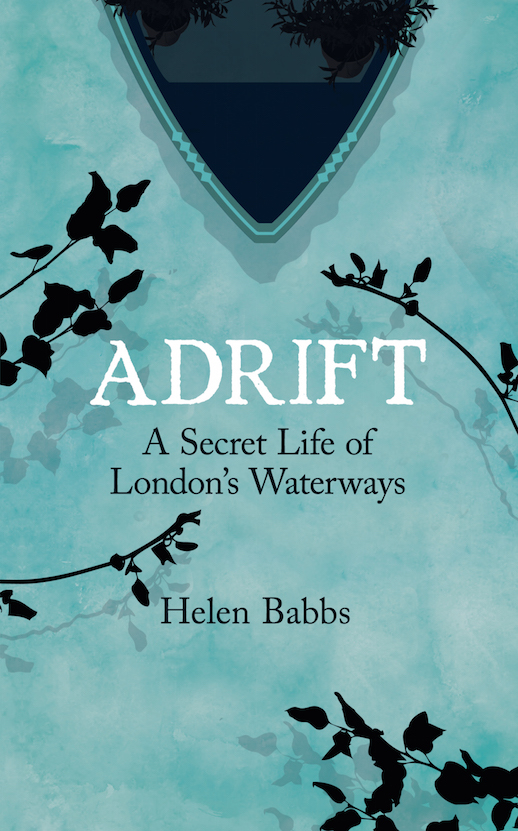 Adrift: A Secret Life of London’s Waterways by Helen Babbs
Adrift: A Secret Life of London’s Waterways by Helen Babbs
(Icon Books, 304 pages, hardback. Out now.)
Review by Ben McCormick
It is always deeply satisfying when your lack-of-evidence-based assertions are given credence by the first-hand accounts of those who know exactly what they’re talking about.
So within the first few paragraphs of Adrift, journalist Helen Babbs’ chronicle of a year spent cruising round the canals of London, a smug grin broadened across my face, painting a thin pink crescent of self-justification as it cracked. While frequently given to bouts of naïve romanticism, I’m firmly in the ‘leave it’ camp when it comes to boat dwelling – in this country at any rate.
If you’ve ever whiled idle time by Britain’s waterways watching colourful barges piloted by perma-smiling, thick cable-knit jumper wearing captains of the canal chug by and wondered what it might be like to live aboard, you should read this book. Because as well as taking the reader on a beguiling, arc-like journey across the capital that paints a terrific picture of water-borne existence, this book never totters overboard into reverie; rather it honestly and uncompromisingly sets out the reality of canal living.
From the outset and all along our wending way, we are treated to fascinating histories, beautiful descriptions of canalside flora and fauna, first-hand accounts of some of the less savoury aspects of boat life and heartfelt commentary on societal changes and their effects on those at the sharp end. Clearly a gifted wordsmith, Babbs delights in weaving her own stunningly evocative imagery – crows are ‘big black full stops’, pilot lights are ‘orange-lit Os punching holes into the deepening gloom’ while goalposts are ‘pagan, skeletal standing stones’ – with that of writers such as Richard Mabey, Ted Hughes and Virginia Woolf. It’s a fine balancing act: the extensive bibliography is referenced throughout, which can be mildly distracting, especially since the author’s own command of language and appreciation of all that surrounds her is so acute.
But these are trifling ripples quickly calmed as you navigate your way through chapter after chapter of utterly captivating prose. The author invites us to accompany her through London’s waterways with tales of New Year’s Eves spent in launderettes, encounters with ‘gongoozlers’, near-sinking experiences and the intricacies of disposing of ‘black waste’. She also captures the character and features of the ever-changing landscape – from the Lee Navigation to the Grand Union at Uxbridge – with the kind of compelling language that makes such an arduous trip a genuine joy. The canal on which she floats is ‘cut, high-sheen smoked glass’, while Sheldon Square, gloriously, ‘looks like someone has drained the blood out of the place’.
It’s not just barge life that’s explored either. We drift with the author down lost rivers and canals accompanied by startling facts about London’s lost sparrows, gentrification by corporatism and underlying sensations of fear, paranoia and threat.
But where this compelling book really succeeds for me is by inspiring visits to the many hitherto unknown places described, by provoking more thorough thought into what makes up our environment and by making canals interesting in a way my own teachers and several rain-soaked field trips to grim northern cuts failed to do: giving them context, meaning and a glimpse of the possible brighter future.
There’s still no way I’m living on a canal barge, mind.